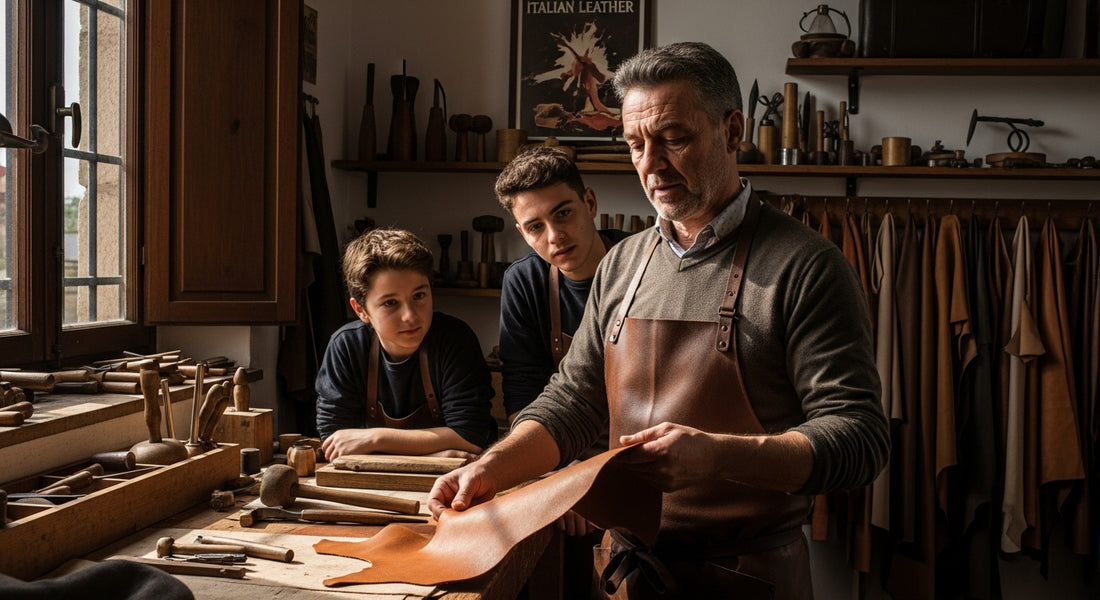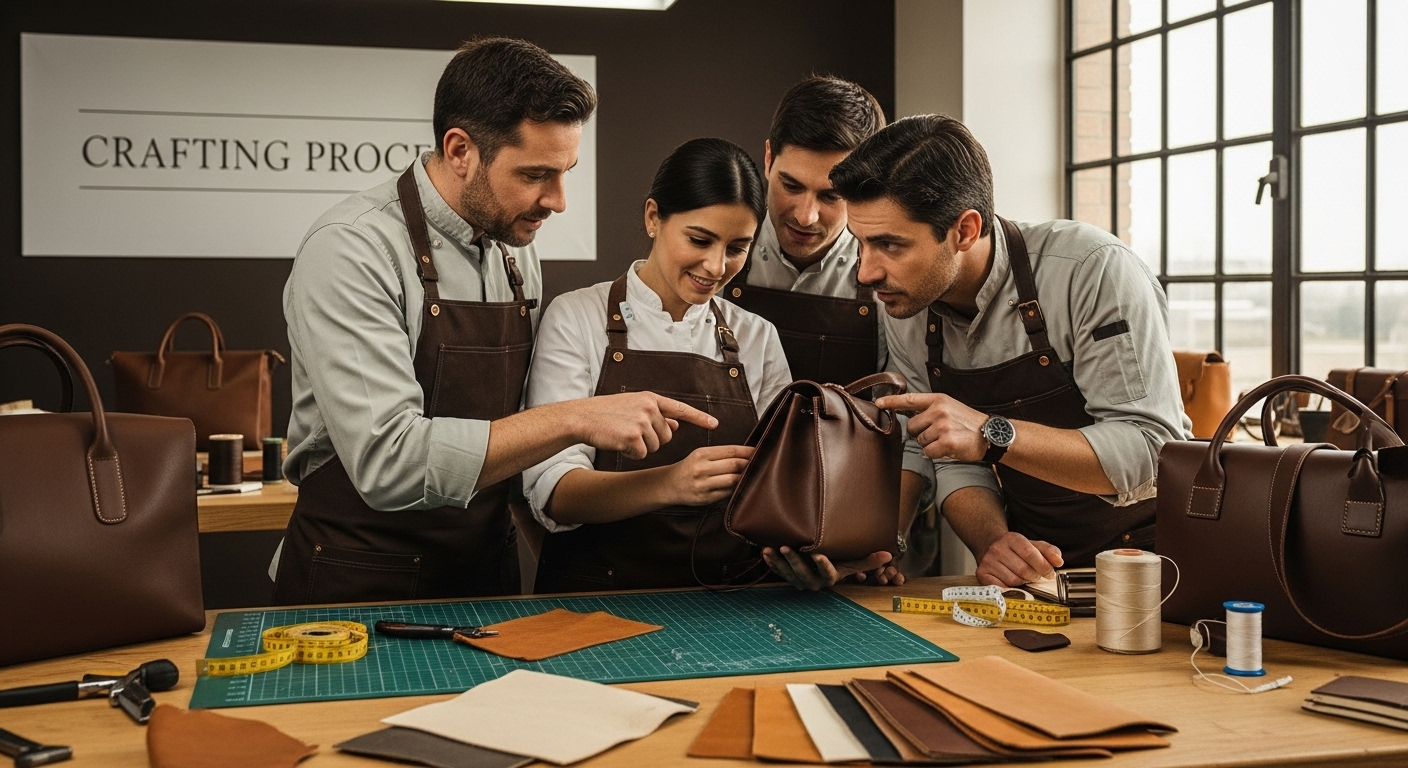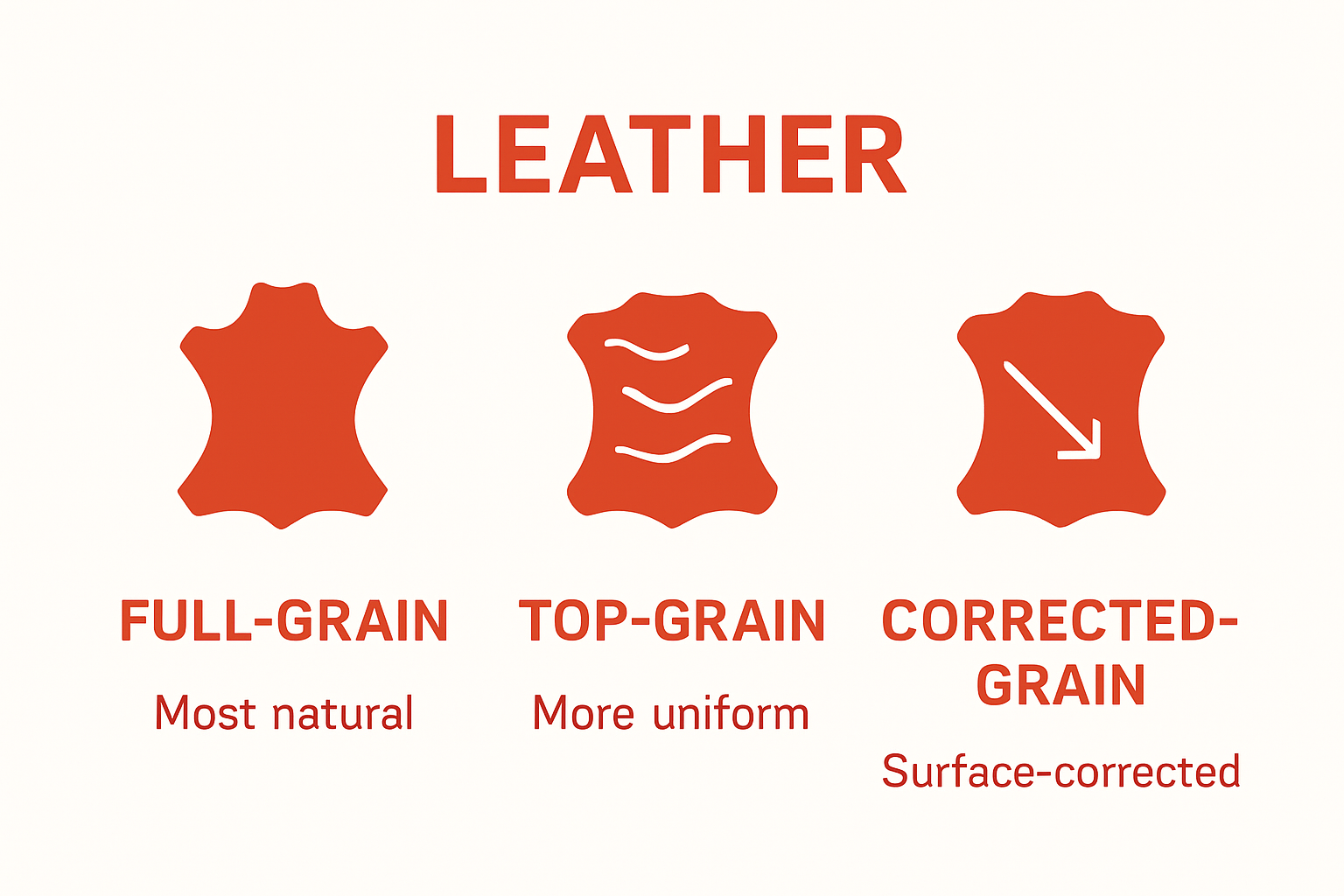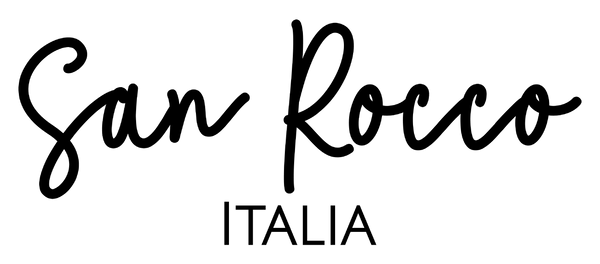
Understanding How Italian Leather is Made: A Comprehensive Guide
Share
Italian leather has a reputation that stretches across continents and centuries. People often imagine only luxury handbags or expensive shoes, but the real story hides in the details. The most surprising thing is that Italian leather represents about 75 percent of the premium leather market worldwide, and this is not just about style. The secret lies in centuries-old methods, ethical craftsmanship, and an unwavering dedication to quality that continues to shape its legacy today.
Table of Contents
- What Is Italian Leather And Its Unique Qualities?
- The Importance Of Authentic Italian Leather In Fashion
- The Crafting Process: How Italian Leather Is Made
- Key Concepts In Italian Leather Production
- Sustainability And Ethical Practices In Italian Leather Making
Quick Summary
| Takeaway | Explanation |
|---|---|
| Authentic Italian leather boasts superior quality. | It is crafted using exceptional tanning methods, ensuring durability and maintaining its natural grain. |
| Italian leather prioritises ethical production. | Manufacturers adhere to rigorous environmental and social standards, ensuring responsible sourcing and worker welfare. |
| It is renowned for its luxurious softness and durability. | The unique tanning processes contribute to a supple texture and long-lasting quality. |
| Natural variations enhance the aesthetic appeal. | Each piece of Italian leather features unique markings, adding character and exclusivity to the product. |
| Invest in Italian leather for timeless craftsmanship. | Choosing Italian leather ensures you receive a product that reflects both tradition and excellence in design. |
What is Italian Leather and Its Unique Qualities?
Italian leather represents the pinnacle of craftsmanship, a testament to generations of artisanal expertise rooted deeply in the country’s rich manufacturing traditions. Unlike mass-produced leather goods, Italian leather embodies a standard of quality that transcends mere material production, representing a cultural heritage of meticulous design and superior technique.
Origins and Authentic Characteristics
Authentic Italian leather emerges from a complex process that distinguishes it from global leather production. The primary differentiator lies in the exceptional tanning techniques developed over centuries in regions like Tuscany, which have become globally renowned for leather craftsmanship. These techniques prioritise transforming raw animal hides into supple, durable materials through traditional methods that preserve the leather’s natural grain and structural integrity.
According to Italian Leather Research Institute, genuine Italian leather is characterised by several key attributes:
- Superior full-grain leather quality, which retains the complete natural surface of the hide
- Sophisticated chromium-free and vegetable tanning processes
- Strict environmental and ethical manufacturing standards
- Emphasis on preserving the leather’s natural markings and unique character
Unparalleled Quality and Craftsmanship
What truly sets Italian leather apart is its commitment to uncompromising quality. Italian artisans approach leather production as an art form, carefully selecting hides, employing time-honoured techniques, and maintaining rigorous quality control standards. Each piece tells a story of tradition, skill, and meticulous attention to detail.
For those interested in understanding more about our commitment to exceptional leather, read more about our Italian leather craftsmanship. The intricate process transforms raw materials into luxurious, long-lasting products that represent the pinnacle of Italian manufacturing excellence.
The Importance of Authentic Italian Leather in Fashion
Italian leather has long been synonymous with luxury, sophistication, and unparalleled quality in the global fashion landscape. Its significance extends far beyond mere material choice, representing a complex intersection of artistic heritage, technical expertise, and cultural identity that continues to shape contemporary design and consumer preferences.
Cultural and Design Significance
In the realm of high fashion, authentic Italian leather serves as a powerful symbol of craftsmanship and prestige. Designers worldwide seek out these materials not just for their physical properties, but for the intrinsic narrative of excellence they communicate. Research from the European Fashion Council indicates that Italian leather represents approximately 75% of the premium leather market, underscoring its global reputation for superior quality.
The unique attributes that make Italian leather exceptional include:
- Unmatched softness and suppleness
- Natural variations that enhance aesthetic appeal
- Remarkable durability and longevity
- Ability to develop a rich patina over time
- Sustainable and environmentally conscious production methods
Sustainability and Ethical Manufacturing
Modern fashion increasingly demands not just aesthetic excellence but also responsible production. Italian leather manufacturers have been at the forefront of this movement, implementing rigorous environmental standards and ethical practices. These artisans prioritise techniques that minimise ecological impact while maintaining the highest quality standards.
For those interested in exploring the deeper economic and design implications, discover the value of investing in Italian leather. The commitment to sustainability and craftsmanship ensures that each piece is not just a fashion statement, but a testament to responsible manufacturing and timeless design.
The Crafting Process: How Italian Leather is Made
The transformation of raw animal hides into exquisite Italian leather is a sophisticated journey that combines centuries-old traditions with precision craftsmanship. This intricate process represents far more than simple manufacturing—it is an art form that demands extraordinary skill, patience, and deep understanding of material properties.
Hide Selection and Preparation
The foundation of exceptional Italian leather begins with meticulous hide selection. Master artisans carefully evaluate animal skins, prioritising those with minimal imperfections and natural grain integrity. According to European Leather Institute, premium Italian leather typically originates from cattle raised in controlled environments, ensuring superior hide quality.
Key considerations during hide preparation include:
- Careful removal of remaining hair and flesh
- Precise cleaning and sanitisation techniques
- Elimination of potential structural weaknesses
- Maintaining the hide’s natural characteristics
Tanning and Transformation Techniques
Tanning represents the critical phase where raw hides metamorphose into supple, durable leather. Italian artisans predominantly employ two primary techniques: vegetable tanning and chrome-free tanning. Vegetable tanning, particularly prevalent in Tuscan workshops, utilises natural plant-based extracts that imbue leather with rich, warm tones and exceptional durability.
Chrome-free tanning methods have gained prominence due to their environmentally conscious approach, reducing chemical interventions while preserving leather’s inherent qualities. These techniques ensure that each piece maintains its unique character, developing a beautiful patina over time.
Learn more about the nuanced benefits of Italian leather quality, which extends far beyond simple material production. The crafting process represents a delicate balance between respecting traditional techniques and embracing innovative, sustainable practices that define modern Italian leather manufacturing.

Key Concepts in Italian Leather Production
Italian leather production represents a sophisticated ecosystem of technical expertise, cultural knowledge, and artisanal precision that extends far beyond simple manufacturing processes. Understanding the foundational concepts reveals the intricate world of craftsmanship that defines this exceptional material.
Grain and Quality Classifications
The classification of leather grain represents a critical aspect of Italian leather production. Each hide undergoes meticulous evaluation to determine its quality and potential applications.
Below is a comparison table summarising the primary classifications of Italian leather grain, helping readers quickly identify key differences and characteristics among the types discussed.
| Leather Grain Type | Description | Key Qualities |
|---|---|---|
| Full-grain leather | Retains the complete natural surface of the hide | Highest quality, durable, unique |
| Top-grain leather | Slightly modified surface for enhanced uniformity | Smooth, durable, more uniform |
| Corrected-grain leather | Surface treatments minimise imperfections | Less natural, more affordable |
| Split leather | Produced from deeper hide layers with different properties | Versatile, used for various items |
Primary leather grain classifications include:

- Full-grain leather: Highest quality, retaining complete natural surface
- Top-grain leather: Slightly modified surface with enhanced uniformity
- Corrected-grain leather: Surface treatments to minimise imperfections
- Split leather: Produced from deeper hide layers with different properties
Ethical and Sustainable Manufacturing
Modern Italian leather production increasingly emphasises ethical and sustainable practices. Manufacturers are pioneering approaches that balance traditional craftsmanship with environmental responsibility. This commitment involves selecting responsible sources, minimising chemical interventions, and implementing comprehensive waste reduction strategies.
Contemporary leather production techniques prioritise:
- Traceable animal hide sourcing
- Reduced water consumption in processing
- Minimised chemical usage
- Carbon footprint reduction
- Circular economy principles
Discover more about our commitment to Italian leather quality, where tradition meets innovation in creating exceptional leather products that represent the pinnacle of craftsmanship and responsible manufacturing.
Sustainability and Ethical Practices in Italian Leather Making
The Italian leather industry is experiencing a profound transformation, repositioning itself as a global leader in sustainable and ethical manufacturing practices. This evolution reflects a deeper understanding that exceptional craftsmanship must harmonise with environmental stewardship and social responsibility.
Environmental Responsibility
Sustainable leather production has become a cornerstone of modern Italian manufacturing. Artisans and manufacturers are actively reimagining traditional processes to minimise ecological impact. European Environmental Agency reports that Italian leather producers have reduced their carbon footprint by implementing innovative waste management and chemical reduction strategies.
Key environmental initiatives include:
- Transitioning to renewable energy sources
- Implementing closed-loop water recycling systems
- Developing biodegradable tanning chemicals
- Utilising solar and wind energy in production facilities
- Reducing overall industrial waste generation
Ethical Sourcing and Labour Practices
Beyond environmental considerations, Italian leather manufacturers are pioneering comprehensive ethical standards that prioritise worker welfare and responsible material sourcing. The industry has developed stringent protocols ensuring fair wages, safe working conditions, and transparent supply chains.
The table below outlines the main environmental and ethical initiatives in modern Italian leather production to illustrate the industry’s responsible manufacturing priorities.
| Initiative | Environmental Focus | Ethical Dimension |
|---|---|---|
| Renewable energy sources | Reduces carbon footprint | Promotes industry sustainability |
| Closed-loop water recycling | Minimises water consumption | Preserves local resources |
| Biodegradable tanning chemicals | Lowers chemical waste | Safer for workers and ecosystems |
| Animal welfare standards | N/A | Ensures humane sourcing |
| Fair worker compensation | N/A | Prioritises worker welfare |
| Transparent supply chain documentation | Enhances traceability | Prevents exploitative practices |
Ethical sourcing principles encompass:
- Rigorous animal welfare standards
- Fair compensation for workers
- Transparent supply chain documentation
- Elimination of exploitative labour practices
- Commitment to local artisan preservation
Learn more about our commitment to sustainable leather production, where each decision reflects a profound respect for craftspeople, environmental integrity, and long-standing Italian manufacturing traditions.
Experience the True Artistry Behind Italian Leather at San Rocco Italia
You have just explored the intricate world of Italian leather making, discovering the importance of authentic full-grain leather, ethical craftsmanship, and the heritage of skilled artisans. If you have struggled to find genuine luxury goods that truly reflect this tradition, you are not alone. Many modern products lack the authenticity, durability, and soul found in Italian leather handcraft.
At San Rocco Italia you will find a boutique collection where these traditions are alive. Each handbag, accessory, and décor piece is expertly crafted in Italy using the very processes you have just learned about. Our focus on timeless design and responsible sourcing ensures that every item is more than just an accessory. It is a legacy of artistry.

Take the next step and make the craftsmanship you admire a part of your everyday life. Discover our collection of authentic Italian leather goods by visiting San Rocco Italia right now. For a deeper understanding of what sets our approach apart, read how we honour Italian leather craftsmanship and see why investing in Italian leather delivers lasting value. Now is the perfect moment to choose authenticity and expertise with a piece from our curated selection.
Frequently Asked Questions
What is Italian leather and what makes it unique?
Italian leather is a premium quality leather known for its exceptional craftsmanship, originating from a meticulous tanning process that preserves the natural grain and structure of the hide. Its unique qualities include durability, softness, and natural variations that enhance its aesthetic appeal.
How is Italian leather made?
Italian leather is made through a detailed process that includes hide selection, tanning, and finishing. Artisans carefully choose high-quality hides, primarily through methods like vegetable and chrome-free tanning, which ensure the leather is durable while maintaining its natural character.
What are the different types of Italian leather grain?
Italian leather is classified into several grain types, including full-grain, top-grain, corrected-grain, and split leather. Full-grain leather is the highest quality, retaining the complete natural surface, while the others undergo varying degrees of treatment to achieve specific characteristics.
How does the tanning process affect the quality of Italian leather?
The tanning process significantly affects the quality of Italian leather by determining its durability, softness, and colour. Vegetable tanning, for instance, uses natural plant extracts, resulting in rich tones and a unique patina, while chrome-free tanning methods reduce chemical exposure, promoting environmental sustainability.
Recommended
- Understanding Italian Leather Craftsmanship: Timeless Quality – San Rocco Italia
- Why Invest in Italian Leather: Understanding its Value – San Rocco Italia
- Understanding the Benefits of Italian Leather Quality – San Rocco Italia
- Understanding Vegetable Tanned Leather Patina: Beauty Unveiled – San Rocco Italia
- Production Process of Lambskin Leather Archives - Maker of Jacket


